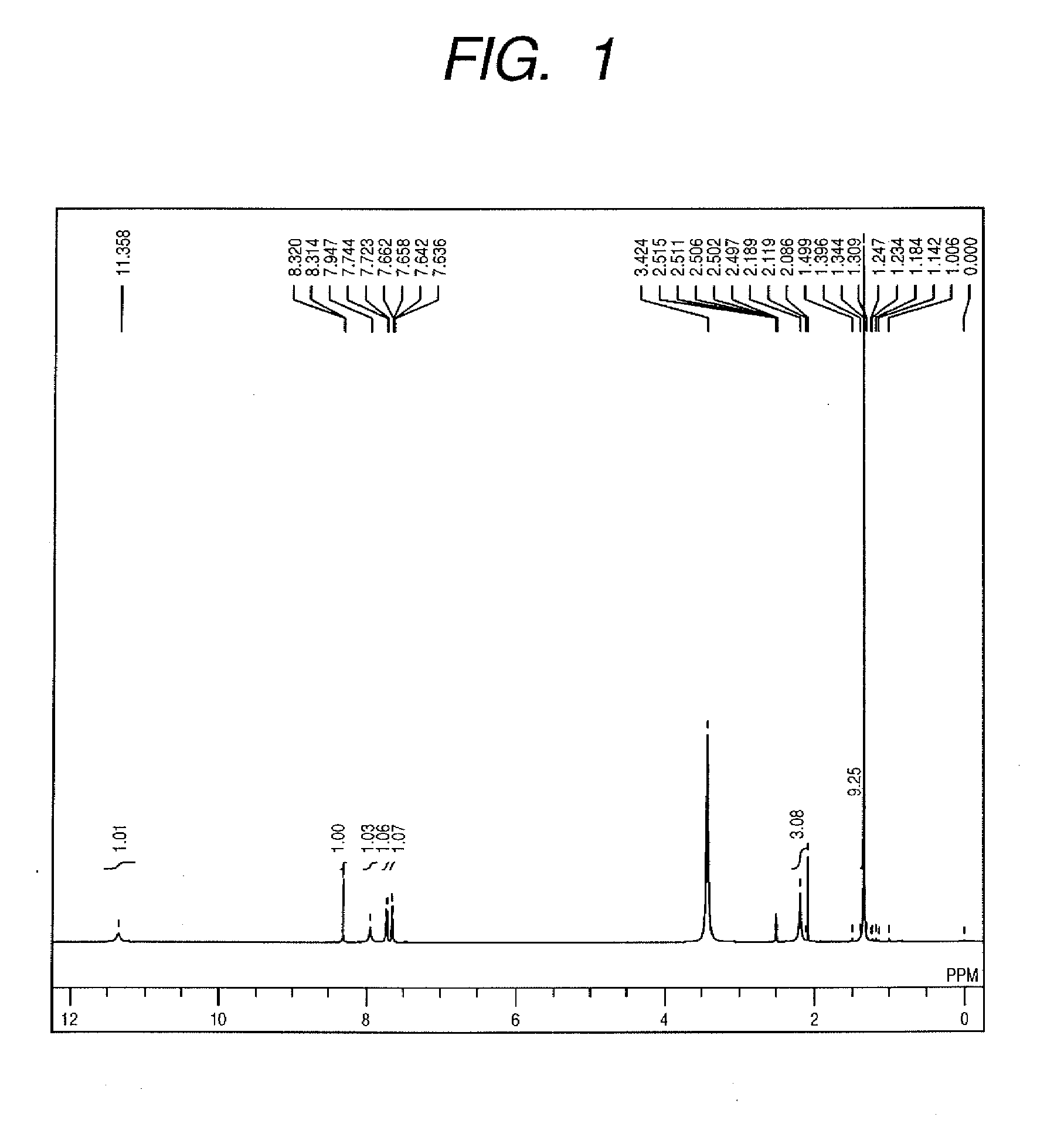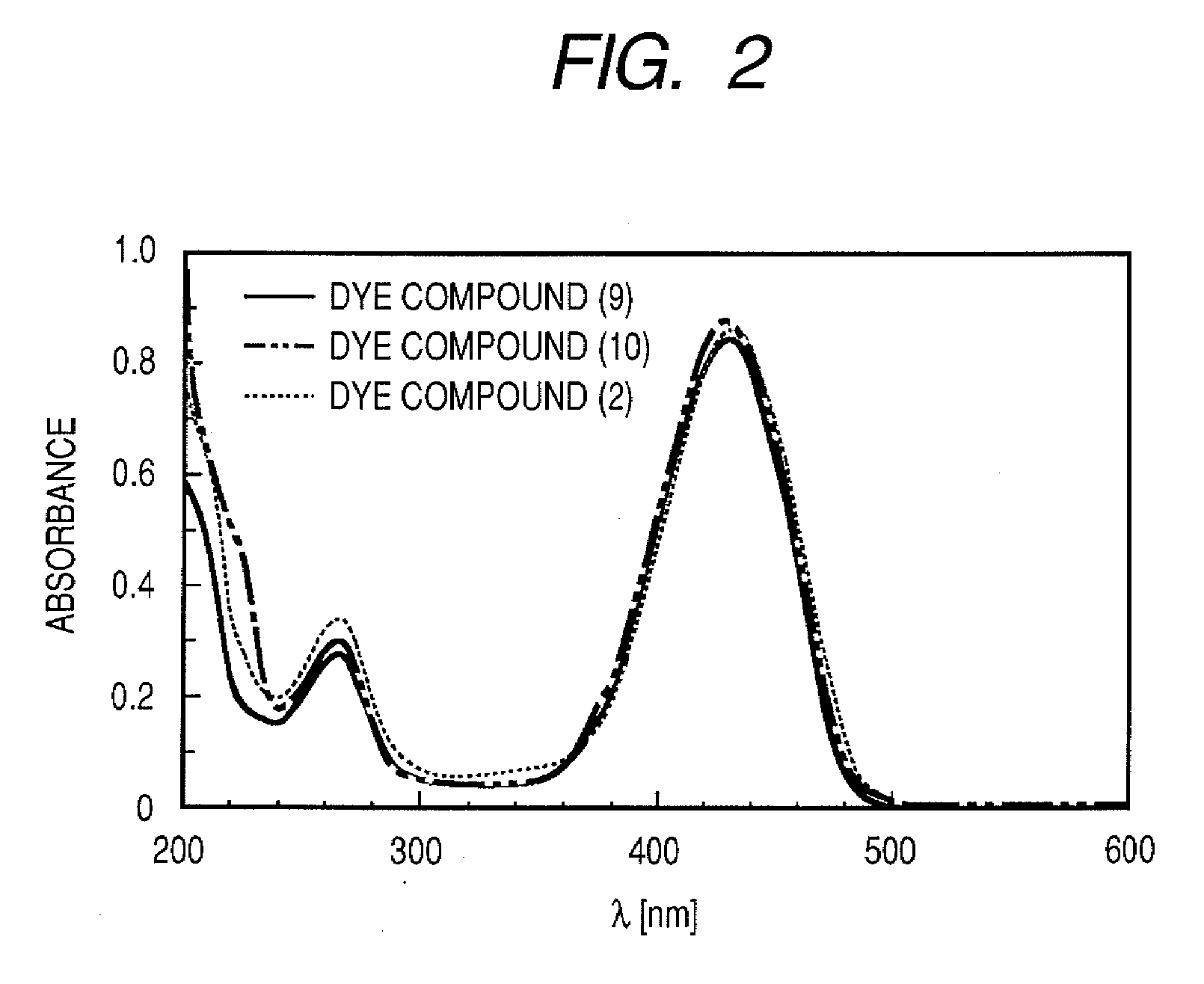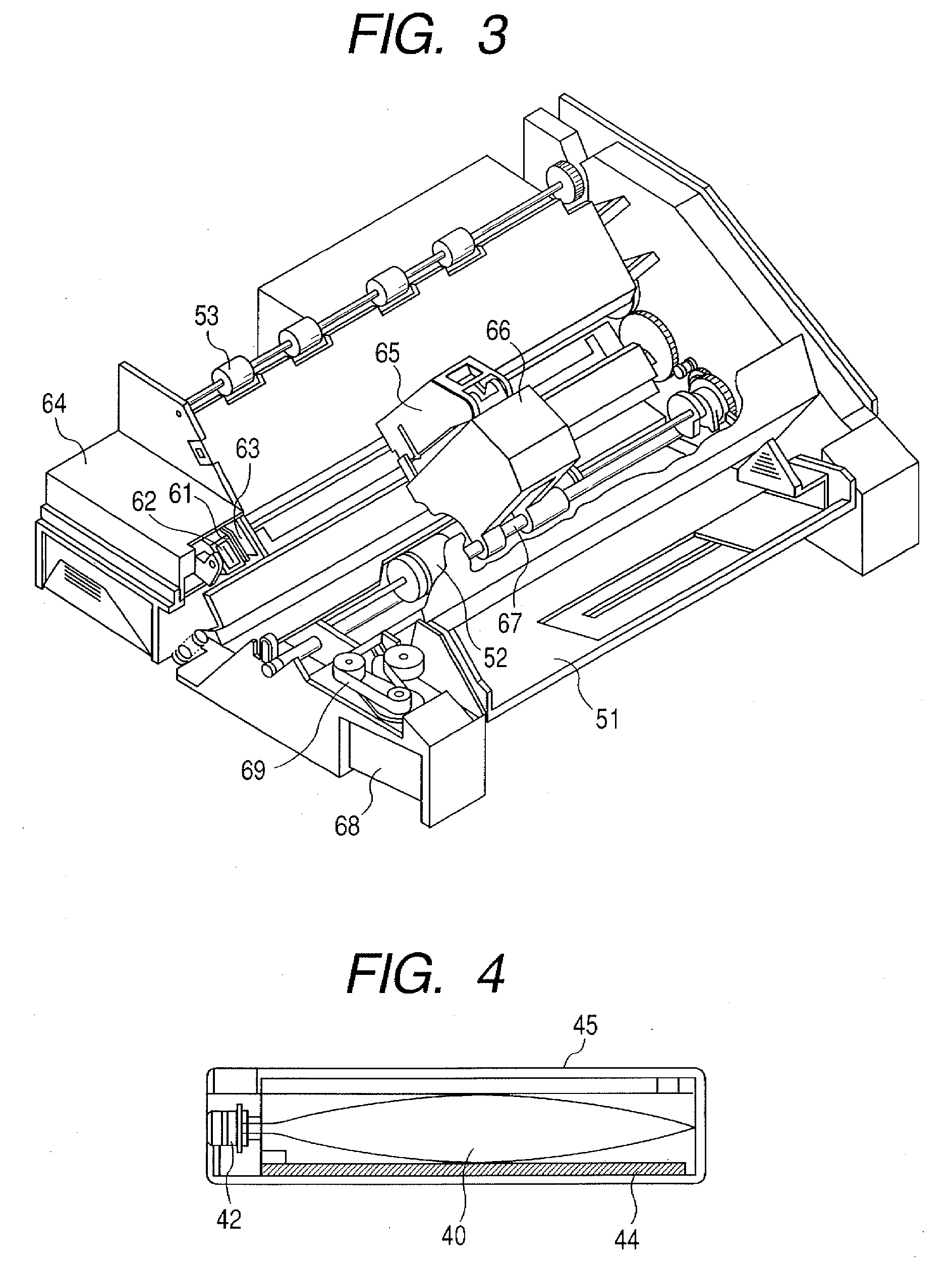Novel dye, dye production method and ink containing dye
a technology of dye and ink, which is applied in the field of dye, can solve the problems of poor image reproducibility, poor color reproducibility of image and image transparency, and ink containing water-soluble dye, and achieve excellent color tone, excellent light resistance, and ozone resistance and humidity resistance. good
- Summary
- Abstract
- Description
- Claims
- Application Information
AI Technical Summary
Benefits of technology
Problems solved by technology
Method used
Image
Examples
example 1
[0075] A dye represented by general formula (1) was obtained in the following manner.
[0076] Synthesis Example 1
[0077] A compound (9) represented by the following formula was synthesized as the dye represented by general formula (1), wherein the X1 and X3 of formula (1) were hydrogen atoms, X2 was —SO3M, R1 was a hydrogen atom, R2 was —C(CH3)3, R3 was —CH3, and M was sodium.
[0078] First, a coupler to be reacted with a diazo component was obtained in the following manner. 10.0 g of 2,6-dihydroxy-4-methyl-3-pyridinecarbonitrile (the compound of general formula (3)) was used as the nitrile compound, and 12.4 g of tert-butanol was used as the alcohol to be reacted with this. 50 mL of glacial acetic acid was used as the reaction solvent, and 20 mL of concentrated sulfuric acid was used as the acid catalyst. These materials were, while cooling with ice and stirring, reacted at 0° C. for 3 hours. The temperature of the reacted solution was slowly returned to room temperature and reactio...
synthesis example 2
[0090] A compound (10) represented by the following formula was synthesized as the dye represented by general formula (1), wherein the X1 and X3 of formula (1) were hydrogen atoms, X2 was —SO3M, R1 was a hydrogen atom, R3 was —CH3, R2 was —C(CH3) C6H4SO3M, and M was sodium.
[0091] First, a coupler to be reacted with a diazo component was obtained in the following manner. 10.0 g of 2,6-dihydroxy-4-methyl-3-pyridinecarbonitrile (the compound of general formula (3)) was used as the nitrite compound, and 41.2 g of 80% sodium p-styrenesulfonate was used as the alkene to be reacted with this. 50 mL of glacial acetic acid was used as the reaction solvent, and 30 mL of concentrated sulfuric acid was used as the acid catalyst. The nitrite compound and the alkene were charged into the reaction solvent and acid catalyst under stirring and while maintaining the temperature at 10° C. or less over 1 hour. The temperature of the resultant solution was subsequently increased to between 45 and 50° ...
example 2
[0107] A yellow ink solution was prepared using the dye prepared in Example 1, and evaluated.
(Preparation of ink solution A)Compound (9) obtained in3.5partsSynthesis Example 1:Ethylene glycol:7.5partsGlycerin:7.5partsUrea:7.5partsAcetylenol EH (manufactured1partby Kawaken Fine ChemicalsCo., Ltd.)Water:73parts
[0108] (Preparation of Ink Solutions B to H)
[0109] Ink solutions B to H were prepared in the same manner as in the preparation of ink solution A, except that the compound (9) used in the preparation of ink solution A was changed to the respective dyes as listed in Table 1 that had been prepared beforehand.
[0110]
PUM
| Property | Measurement | Unit |
|---|---|---|
| Mass | aaaaa | aaaaa |
| Mass | aaaaa | aaaaa |
| Mass | aaaaa | aaaaa |
Abstract
Description
Claims
Application Information
 Login to View More
Login to View More - R&D
- Intellectual Property
- Life Sciences
- Materials
- Tech Scout
- Unparalleled Data Quality
- Higher Quality Content
- 60% Fewer Hallucinations
Browse by: Latest US Patents, China's latest patents, Technical Efficacy Thesaurus, Application Domain, Technology Topic, Popular Technical Reports.
© 2025 PatSnap. All rights reserved.Legal|Privacy policy|Modern Slavery Act Transparency Statement|Sitemap|About US| Contact US: help@patsnap.com



